Brazil 2009
Participants: Lynn Bohs, Fátima Agra & Gloria Barboza
Lynn traveled to Bahia, Brazil for 2.5 weeks in company of Brazilian Solanum specialist Fátima Agra. Argentinean solanologist Gloria Barboza joined us for the first part of the trip to search for rare Capsicum species in the caatinga of northeastern Brazil. While waiting for her pals, Lynn explored the exotic coastal city of Salvador. Bahia, and Salvador in particular, is the epicenter of Afro Brazilian culture, reflected in its food, music, racial mix, and outrageous Carnival. A few Solanums grow in the environs of Salvador (S. paniculatum, S. stipulaceum), but absorbing Bahian culture (including taking in the beautiful colonial city and experiencing a Candomblé ceremony) was the theme of the first several days.
After the arrival of Fátima and Gloria, we ventured inland to the caatinga vegetation around Feira de Santana. We spent two days hunting for two elusive new
Capsicum species and managed to find them among the hot, dry, wilted vegetation. Gloria happily left for Córdoba with her prizes to write up the new names and descriptions.
Lynn and Fátima then embarked for Ilhéus, which lies in the wet mata atlântica forest. We collected in the reserve at CEPLAC just outside Ilhéus, traveled to Jequié where we encountered an undescribed Solanum from sect. Erythrotrichum, and searched the restinga vegetation just outside the city of Ilhéus for other endemic Solanums. We toasted our success at the Vesuvius Bar in Ilhéus, made famous in Jorge Amado’s classic novel Gabriela, Clove and Cinnamon.

Fast food Bahia style often includes acarajé, a fritter made of mashed black eyed peas fried in palm oil slathered with hot pepper paste, cooked vegetables, and spicy shrimp. This was Lynn’s dinner on night #1 in Salvador.

Gloria Barboza (left) and Fátima Agra (right) in the caatinga encountering an undescribed species of Capsicum.

Giant igneous “inselbergs” rear up from the dry caatinga vegtation in northeastern Brazil. This photograph was taken inland in Bahia state east of Feira de Santana near Itatim.

Lynn recording data in the Bahian caatinga.
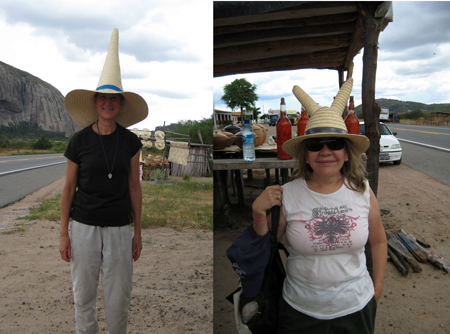
Silly hats help a lot in locating rare Solanaceae.
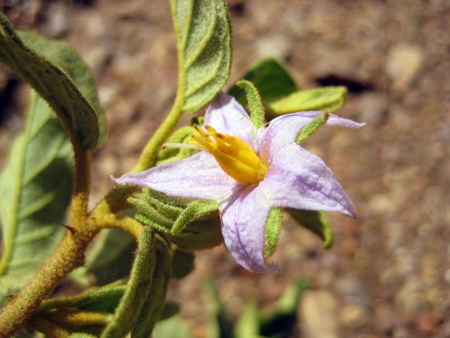
An undescribed species of Solanum sect. Erythrotrichum from the outskirts of Jequié.
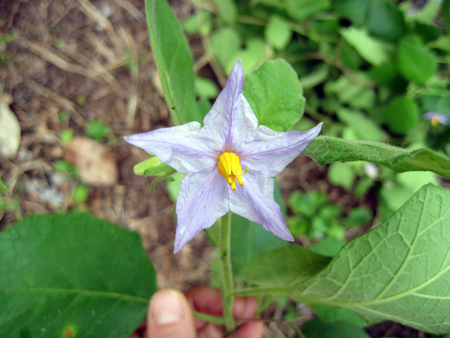
Solanum megalonix from sect. Erythrotrichum encountered near Coaricí.
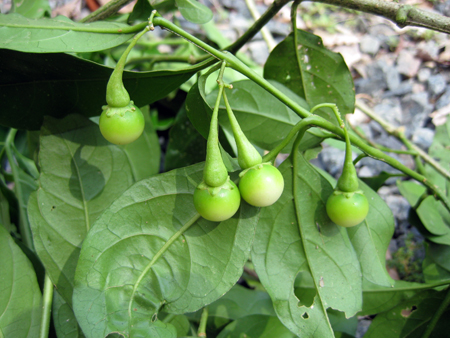
Fruits of the elusive S. bahianum (sect. Geminata) collected in mata atlântica in the CEPLAC reserve, the only area where it is known to grow.

The CEPLAC reserve has a sloth rehabilitation facility and this lady is in charge of taking care of the critters.
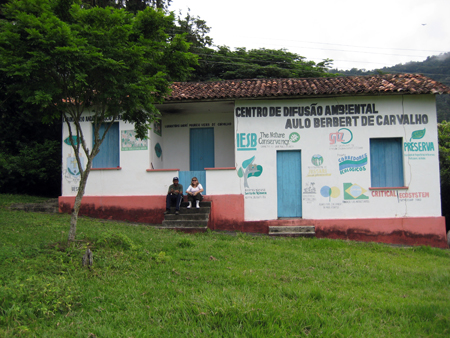
Zé Lima and Fátima Agra at the educational building at Fazenda Teimoso near Jussari. The casa is named in honor of the late Bahian botanist Andre Carvalho.
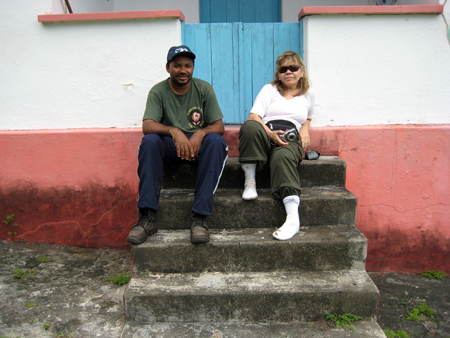
Collecting companions Zé Lima and Fátima Agra at Serra do Teimoso.
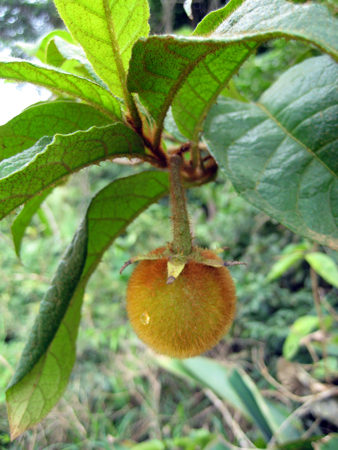
Fruit of S. rupincola (sect. Erythrotrichum) from restinga (coastal forest on nutrient-poor soils) near Ilhéus.

We were lucky to find S. cordioides (sect. Geminata), endemic to a small area on the Bahian coast. This species was described by Sandy Knapp in her 2002 Geminata monograph.

